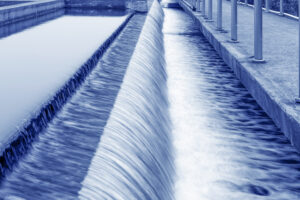Table of Contents
- 1 What is the UV Advanced Oxidation Process (UV AOP)?
- 2 How the UV Oxidation Process Works
- 3 What Influences AOP Performance?
- 4 Ozone vs. Hydrogen Peroxide or Chlorine in UV AOP
- 5 Why Choose One Oxidant Over Another?
- 6 Pollutants Targeted by UV Advanced Oxidation Process
- 7 Pollutants Effectively Treated by UV AOP
- 8 The Role of UV AOP in Treating Emerging Contaminants
- 9 Why UVAOP is Needed After Other Water Treatment Processes
- 10 Why is UVAOP Essential?
- 11 Are Water Treatment Plants in the US Using UVAOP?
- 12 LightSources’ UV Germicidal and Ozone Lamps for Water Treatment
What is the UV Advanced Oxidation Process (UV AOP)?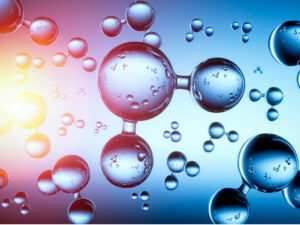
UV Advanced Oxidation Process (UV AOP) is an advanced water treatment technology that combines ultraviolet (UV) light with an oxidizing agent, such as hydrogen peroxide (H₂O₂), chlorine (Cl), or ozone (O3), to effectively degrade complex pollutants in water. Pollutants include harmful environmental contaminants such as chemicals from industrial manufacturing, pharmaceuticals, and pesticides.
UV AOP breaks down harmful substances into harmless by-products like water and carbon dioxide, ensuring cleaner and safer water. Quality germicidal lamps for UV water disinfection are crucial in UV oxidation water treatment across various applications, from municipal drinking water to industrial wastewater reuse.
According to a study published on ScienceDirect, UV advanced oxidation process is gaining popularity due to its effectiveness in removing persistent organic pollutants and improving water quality while minimizing harmful by-products.
How the UV Oxidation Process Works
UV oxidation relies on UV light and oxidizing agents to create reactive particles that attack contaminants at a molecular level. When the oxidizing agent (H₂O₂, Cl, or O3) absorbs the UV photons, the decay forms a reactive product, hydroxyl radicals (•OH). These hydroxyl radicals can effectively degrade these persistent chemical and pesticide contaminants.
Key steps in the UV oxidation process
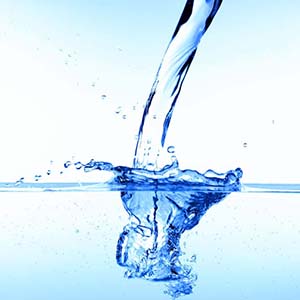 The UV oxidation process relies on a precise combination of UV light and oxidants to generate powerful hydroxyl radicals, which are instrumental in breaking down persistent contaminants.
The UV oxidation process relies on a precise combination of UV light and oxidants to generate powerful hydroxyl radicals, which are instrumental in breaking down persistent contaminants.
- UV Light Activation: UV light at specific wavelengths (often 254 nm) interacts with oxidants, such as H₂O₂ or Cl, to produce hydroxyl radicals (•OH). These radicals are extremely reactive and can degrade a broad range of organic pollutants.
- Breakdown of Contaminants: Once hydroxyl radicals are formed, they attack and oxidize contaminants, breaking them down into simpler, non-toxic components like water and carbon dioxide.
This advanced UV water treatment method ensures a highly effective solution for degrading complex organic pollutants, making it a vital step in modern water treatment.
What Influences AOP Performance?
The efficiency of the UV Advanced Oxidation Process (UV AOP) can be affected by various water quality factors and system design considerations. By understanding these influences, operators can optimize the process for superior pollutant degradation and system performance.
- Water Clarity (UV Transmittance or UVT): Clearer water allows more UV light to penetrate, improving the efficiency of the process.
- Scavenging Capacity: Substances in the water, such as organic material or chlorine, can reduce the number of hydroxyl radicals available to degrade pollutants. In reverse osmosis (RO) highly treated water, scavenging by organic matter is minimal, but chlorine and chloramines play a significant role.
According to ScienceDirect, pre-treatment steps such as filtration can enhance the efficiency of UV AOP by reducing substances that interfere with hydroxyl radical formation.
Ozone vs. Hydrogen Peroxide or Chlorine in UV AOP
The choice of oxidant in UV Advanced Oxidation Process (UV AOP) systems plays a crucial role in determining the efficiency and effectiveness of pollutant degradation. Each oxidant—ozone, hydrogen peroxide, or chlorine—offers unique advantages and is selected based on the specific water treatment goals and contaminant profiles.
Ozone as the Oxidant: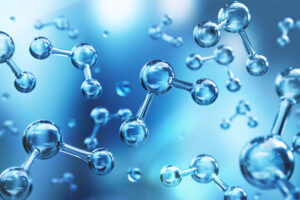
In UV/Ozone AOP systems, ozone is injected into the water, serving as the primary oxidizing agent. When exposed to UV light (at wavelengths of 185 nm or 254 nm), ozone decomposes into oxygen molecules and oxygen radicals, forming hydroxyl radicals (•OH). These hydroxyl radicals are responsible for breaking down pollutants.
The hydroxyl radicals generated in this process play a crucial role in degrading a wide variety of contaminants. They effectively attack and oxidize complex organic pollutants, including pesticides, pharmaceuticals, and industrial solvents, breaking them down into simpler, non-toxic by-products such as water and carbon dioxide. This synergistic combination of ozone and UV light ensures an efficient and environmentally friendly approach to water purification.
When is Ozone Preferred?
Ozone is highly effective for water containing organic pollutants, such as taste-and-odor compounds or pesticides. It’s often used in applications where chemical residues from chlorine or hydrogen peroxide would be undesirable.
Hydrogen Peroxide as the Oxidant:
In UV/Hydrogen Peroxide AOP systems, H₂O₂ absorbs UV light and produces hydroxyl radicals. This approach is ideal for breaking down complex organic molecules, such as pharmaceuticals and industrial chemicals.
When is Hydrogen Peroxide Preferred?
Often used in applications requiring high hydroxyl radical yields without additional chemical by-products. Easier to dose and control compared to ozone, especially in smaller systems.
Chlorine as the Oxidant:
In UV/Chlorine AOP systems, chlorine or chloramines act as the oxidizing agents. These systems are typically used in municipal potable water reuse projects where residual chlorine is already present for disinfection. According to a National Library of Medicine study, “UV-chlorine is a new treatment technology that is well suited for potable reuse treatment following RO.”
When is Chlorine Preferred?
Common in municipal water treatment because chlorine is already part of the disinfection process. Cost-effective for large-scale water treatment operations.
Why Choose One Oxidant Over Another?
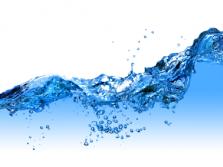 The choice of oxidant—ozone, hydrogen peroxide, or chlorine—depends on:
The choice of oxidant—ozone, hydrogen peroxide, or chlorine—depends on:
- Water Chemistry:
- If the water contains scavengers (substances that interfere with hydroxyl radical formation), the efficiency of the AOP can vary. For example, chlorine may react with organic matter in the water, whereas ozone or hydrogen peroxide might be more effective in certain conditions.
- Target Contaminants:
- Ozone: Effective for organic pollutants, taste-and-odor compounds, and some emerging contaminants.
- Hydrogen Peroxide: Versatile and widely used for degrading various contaminants, including micropollutants.
- Chlorine: Effective in systems where residual disinfection is needed after AOP.
- System Design and Cost:
- Ozone systems may require more infrastructure for on-site ozone generation.
- Hydrogen peroxide is easier to handle and integrate but may require precise dosing.
- Environmental Considerations:
- Hydrogen peroxide and ozone break down into harmless by-products (oxygen and water).
- Chlorine can leave residuals that may form disinfection by-products (DBPs).
Ozone can be used instead of hydrogen peroxide or chlorine in UV AOP systems, depending on the specific treatment needs. Each oxidant has unique strengths, and the choice is guided by water chemistry, contaminant type, system design, and cost. For instance:
- Ozone is great for taste-and-odor removal and organic pollutant oxidation.
- Hydrogen Peroxide is versatile for a wide range of contaminants.
- Chlorine fits well in municipal systems needing residual disinfection after treatment.
Pollutants Targeted by UV Advanced Oxidation Process
The UV Advanced Oxidation Process (UV AOP) is highly effective at targeting and degrading various persistent environmental contaminants that other treatment methods often fail to remove. These pollutants are typically low-molecular-weight chemicals that can pass through reverse osmosis (RO) membranes and pose significant risks to human health and the environment.
By leveraging the power of UV light and oxidants to generate hydroxyl radicals, UVAOP breaks these contaminants down into non-toxic by-products, ensuring safer water quality.
Pollutants Effectively Treated by UV AOP
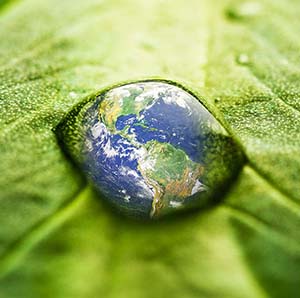 UV AOP is uniquely effective in targeting and breaking down contaminants that are challenging to remove using traditional water treatment methods, including reverse osmosis (RO). These pollutants, often small in size and chemically resistant, can pose significant risks to human health and the environment. Here are some of the key contaminants UV AOP can address:
UV AOP is uniquely effective in targeting and breaking down contaminants that are challenging to remove using traditional water treatment methods, including reverse osmosis (RO). These pollutants, often small in size and chemically resistant, can pose significant risks to human health and the environment. Here are some of the key contaminants UV AOP can address:
- 1,4-Dioxane
A synthetic chemical commonly used in solvents and detergents. This carcinogenic compound is highly resistant to conventional treatments but is effectively oxidized by UV AOP into non-toxic by-products. - NDMA (N-Nitrosodimethylamine)
Found in industrial wastewater and as a by-product of disinfection processes, NDMA is a probable carcinogen. UV AOP systems break down NDMA at a molecular level, ensuring its concentration is reduced to safe levels. - Pharmaceuticals and Personal Care Products (PPCPs)
Trace amounts of drugs, antibiotics, and cosmetic products can enter water supplies through domestic and industrial waste. UV AOP eliminates these contaminants, reducing their impact on aquatic ecosystems and human health. - Endocrine-Disrupting Chemicals (EDCs)
These chemicals, present in pesticides, plastics, and household products, interfere with hormonal systems and can harm wildlife and humans. UV AOP neutralizes EDCs, preventing their persistence in the environment. - Industrial Solvents
Organic solvents from manufacturing processes are often resistant to standard water treatment methods. UV AOP uses hydroxyl radicals to degrade these substances into safer, less harmful compounds. - Pesticides and Herbicides
Agricultural runoff can carry harmful pesticides and herbicides into water systems. UV AOP breaks down these chemicals, ensuring water safety and reducing human and environmental health risks.
UV AOP is a critical step in advanced water treatment systems. It targets these persistent contaminants and ensures clean and safe water for various applications.
The Role of UV AOP in Treating Emerging Contaminants
Emerging contaminants, such as micropollutants and complex organic compounds, represent a growing concern in water treatment. By targeting these pollutants, UV AOP improves drinking water safety and mitigates environmental harm. This makes it essential for advanced water treatment systems, particularly in potable water reuse and industrial wastewater treatment applications.
UV AOP’s ability to address these challenging contaminants highlights its vital role in modern water treatment strategies, offering a robust and sustainable solution to meet the demands of clean water in an era of increasing environmental challenges.
Why UVAOP is Needed After Other Water Treatment Processes
What Do Microfiltration and Reverse Osmosis Remove?
- Microfiltration (MF): Removes larger particles, suspended solids, and microorganisms like bacteria and protozoa.
- Reverse Osmosis (RO): Removes dissolved salts, heavy metals, and larger organic molecules by forcing water through a semipermeable membrane. RO is highly effective for desalination and reducing Total Dissolved Solids (TDS).
Certain contaminants like trace pharmaceuticals, pesticides, and industrial chemicals can still slip through microfiltration and reverse osmosis. These are often micropollutants or emerging contaminants—small, complex molecules that are harder to capture with filtration alone.
Where Does UVAOP Fit in the Process?
After filtration steps like MF and RO have removed the bulk of particles, salts, and organic materials, UVAOP is a final step to target and break down these remaining micropollutants.
- Step 1: Pre-Treatment
- Water undergoes filtration (e.g., sediment filters, activated carbon) to remove large particles, turbidity, and organic matter.
- Step 2: Advanced Filtration
- Microfiltration (MF) or ultrafiltration (UF) removes smaller particles and microorganisms.
- Reverse Osmosis (RO) then eliminates dissolved salts, metals, and larger organic compounds.
- Step 3: UVAOP
- This final step is where UV advanced oxidation process comes into play. UV light is introduced to an oxidant, such as hydrogen peroxide or chlorine, to produce hydroxyl radicals (•OH).
- These radicals attack and degrade micropollutants at the molecular level, breaking them down into non-toxic by-products like water and carbon dioxide.
Why is UVAOP Essential?
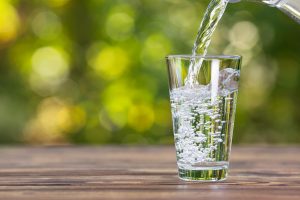 UV Advanced Oxidation Process (UVAOP) is a critical component in modern water treatment systems, offering advanced capabilities to address the challenges posed by emerging contaminants and regulatory requirements. Its unique approach to water purification ensures safe and clean water for various applications.
UV Advanced Oxidation Process (UVAOP) is a critical component in modern water treatment systems, offering advanced capabilities to address the challenges posed by emerging contaminants and regulatory requirements. Its unique approach to water purification ensures safe and clean water for various applications.
- Targeting Micropollutants: UVAOP is uniquely effective in degrading contaminants that are small, stable, and chemically resistant, such as pharmaceuticals, pesticides, PFAS (per- and polyfluoroalkyl substances), and industrial solvents.
- No Chemical Residues: UVAOP doesn’t leave harmful by-products, unlike chlorine disinfection. Instead, it neutralizes pollutants without altering water taste, color, or odor.
- Enhanced Safety: It provides an additional barrier, ensuring water quality meets stringent health and safety standards, especially for potable reuse.
Are Water Treatment Plants in the US Using UVAOP?
UVAOP is increasingly adopted by water treatment plants across the United States, especially in areas focused on potable water reuse or advanced wastewater treatment. Examples include:
- Potable Water Reuse Projects:
In regions with water scarcity (e.g., California, Texas, Arizona), UVAOP is used to transform treated wastewater into drinking water. Facilities like the Orange 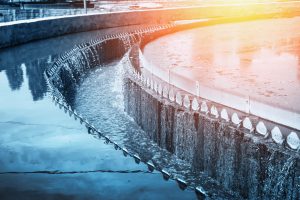 County Water District in California are pioneers in employing UV-based AOP for this purpose.
County Water District in California are pioneers in employing UV-based AOP for this purpose.
- Industrial Applications:
Some industries, like semiconductor manufacturing or pharmaceuticals, require ultrapure water. UVAOP is often integrated into these systems to eliminate trace contaminants.
- Municipal Water Treatment:
Municipalities aiming to meet stricter regulations for emerging contaminants are adopting UVAOP as part of their treatment train.
UVAOP is a supplemental, final treatment step that complements other methods like RO and microfiltration by targeting contaminants that those processes may miss. It is not a standalone solution but rather part of an advanced, multi-barrier water treatment strategy.
With growing regulatory pressures and concerns over emerging contaminants, the adoption of UVAOP is expected to expand significantly across the U.S., particularly in regions focused on potable water reuse and stricter water quality standards.
LightSources’ UV Germicidal and Ozone Lamps for Water Treatment
LightSources specializes in manufacturing high-quality UV germicidal lamps and ozone-generating lamps designed to meet the rigorous demands of advanced water treatment systems, including UV Advanced Oxidation Processes (UVAOP). Our lamps are engineered for reliability, efficiency, and long-lasting performance, making them the ideal choice for various water treatment applications.
UV Germicidal Lamps for Water Treatment
Our UV germicidal lamps emit precise wavelengths of UV-C radiation (typically at 254 nm), which are highly effective in inactivating microorganisms such as bacteria, viruses, and protozoa. These lamps play a vital role in disinfection processes, ensuring water safety for municipal, industrial, and residential systems.
- Applications:
- Drinking water disinfection.
- Industrial wastewater treatment.
- Potable water reuse projects.
Ozone-Generating Lamps for Enhanced Oxidation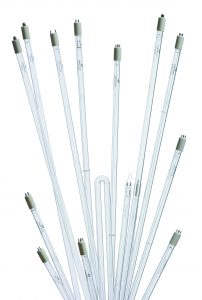
LightSources also offers ozone-generating UV lamps that emit radiation at 185 nm. This wavelength facilitates the production of ozone, a powerful oxidizing agent that enhances the degradation of organic and chemical contaminants. When combined with UV light, ozone amplifies the formation of hydroxyl radicals, making it a key component in ozone AOP systems.
- Applications:
- Reducing total organic compounds (TOCs).
- Oxidizing taste-and-odor compounds in drinking water.
- Enhancing the removal of micropollutants such as pesticides and pharmaceuticals.
Custom Lamp Design and OEM Support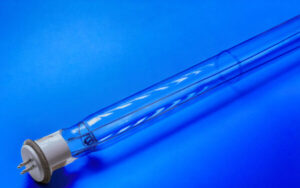
LightSources excels in providing custom-designed lamps tailored to the specific needs of OEMs and system integrators. Whether you require unique dimensions, power levels, or wavelength configurations, our team works closely with you to develop lamps optimized for your application.
- Prototype Development: From initial design to full-scale production, LightSources ensures every lamp meets the highest quality and performance standards.
- OEM Partnerships: We specialize in supporting OEMs with proprietary solutions, offering unparalleled reliability without direct sales to end-users.
LAMP PRODUCT DATA:
UV Germicidal LampsLAMP APPLICATIONS:
UV Germicidal ApplicationsLightSources continues to lead the industry in developing advanced UV solutions for water treatment systems. Our lamps are manufactured with premium materials and undergo rigorous quality control to ensure superior performance and long-lasting operation. For UVAOP, disinfection, or ozone generation, LightSources provides lamps you can depend on for effective and sustainable water treatment, including UV advanced oxidation process (UV AOP).
This post is also available in:
 Chinese (Simplified)
Chinese (Simplified)  Spanish
Spanish  German
German



